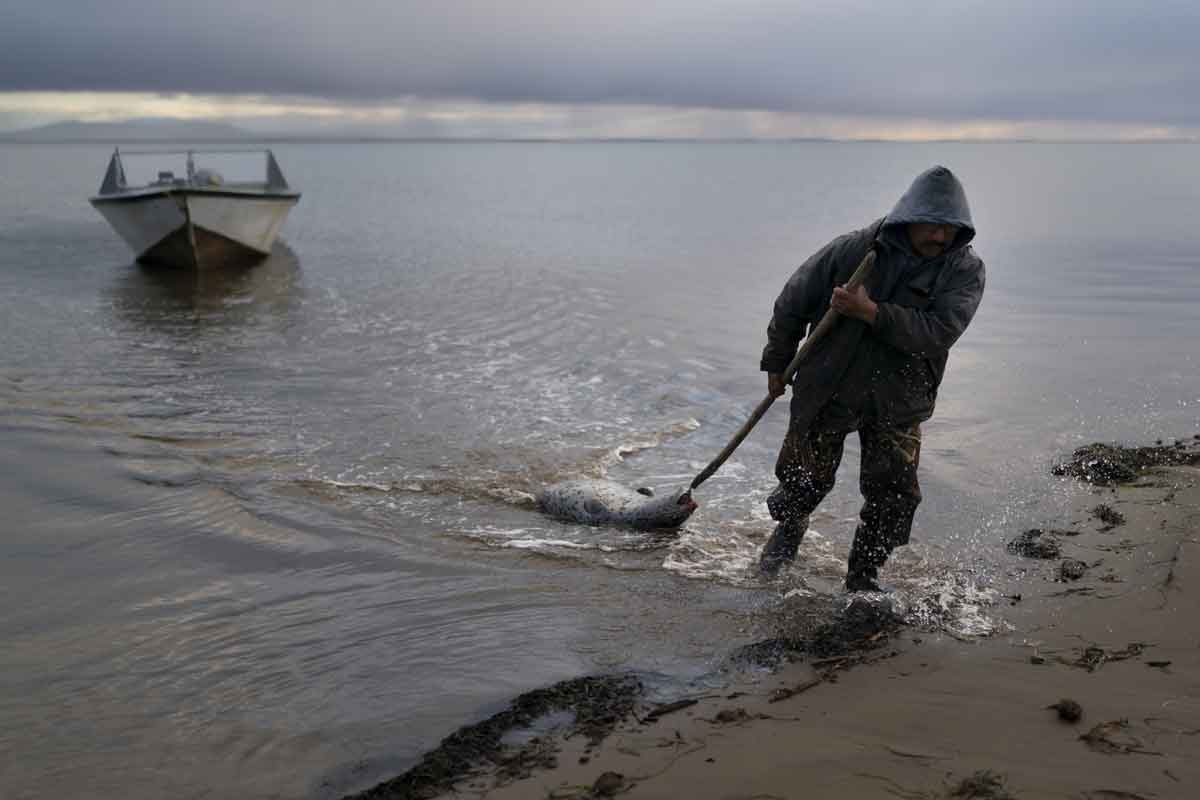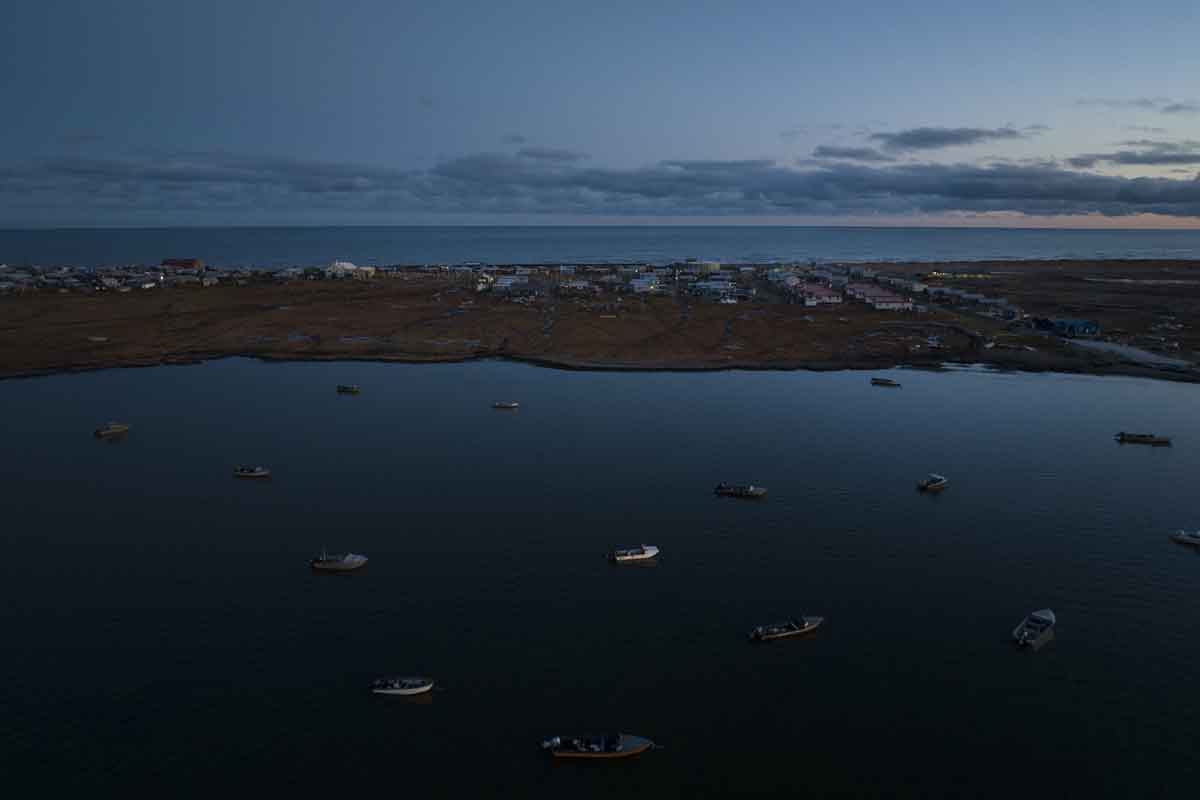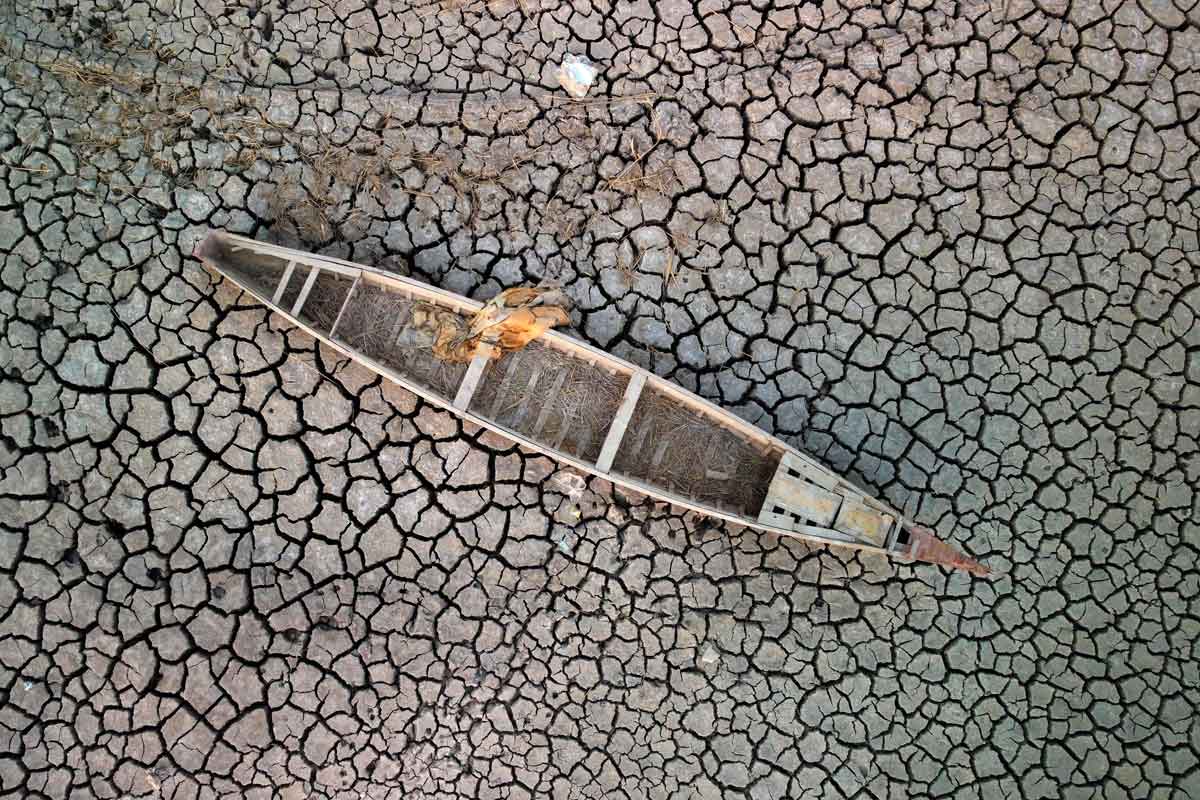 Seal hunter Wilbur Kuzuzuk, 53, drags a spotted seal, his only catch of the day, onto the edge of the lagoon in Shishmaref, Alaska, Tuesday, Oct. 4, 2022. They might be at the edge of the world, but elsewhere they would be far from some of the prime spots for subsistence hunting of bearded seals and other sea mammals or fishing and berry picking in the tundra that make up most of their nutrition. AP
 Small waves crash into reinforced seawalls in Shishmaref, Alaska, Tuesday, Oct. 4, 2022. Rising sea levels, flooding, increased erosion and loss of protective sea ice and land have led residents of this island community to vote twice to relocate. But more than six years after the last vote, Shishmaref remains in the same place because the relocation is too costly. AP
 Boats used for seal hunting are kept in the lagoon side of Shishmaref, Alaska, Saturday, Oct. 1, 2022. Climate change is partially to blame for the rising seas, flooding, erosion and loss of protective ice and land that are threatening this Inupiat village of about 600 people near the Bering Strait, just a few miles from the Arctic Circle. AP
 Pulling a sled with fuel containers in the lagoon, Joe Eningowuk, 62, left, and his 7-year-old grandson, Isaiah Kakoona, head toward their boat through the shallow water while getting ready for a two-day camping trip in Shishmaref, Alaska, Saturday, Oct. 1, 2022. Rising sea levels, flooding, increased erosion and loss of protective sea ice and land have led residents of this island community to vote twice to relocate. But more than six years after the last vote, Shishmaref remains in the same place because the relocation is too costly. AP
 Two hunters prepare their boat for seal hunting in the morning as the sun peaks through the clouds in Shishmaref, Alaska, Monday, Oct. 3, 2022. Shishmaref sits on the small island of Sarichef - just a quarter of a mile wide and about three miles long. Only about half of it is habitable, but hundreds of feet of shore have been lost in past decades. AP
 shows the remains of the submerged Gary Qasruka village, which was abandoned in 1985 and had partly resurfaced recently following a large drop in water level of the Dohuk Dam due to drought, in the northern Iraqi city of Dohuk in the autonomous Kurdish region. - Little rainfall, aggressive heatwaves and worsening drought make the Middle East the most water-stressed region in the world, with climate change threatening to displace millions of people. In 2021, natural disasters forced nearly three million people to leave their homes in Africa and the Middle East, Amy Pope, deputy director of the International Organization for Migration (IOM), told AFP. Globally, the World Bank estimates that by 2050, if nothing is done to prevent it, there will be 216 million people internally displaced by climate change, including 19.3 million in North Africa. AFP
 In this file photo taken on August 10, 2022 water buffaloes walk in dried up marshes near al-Qurnah natural gas field in the north of Iraq s southern Basra province. - Little rainfall, aggressive heatwaves and worsening drought make the Middle East the most water-stressed region in the world, with climate change threatening to displace millions of people. AFP
 In this file photo taken on August 8, 2022, a herd of sheep walk over cracked earth at al-Massira dam in Ouled Essi Masseoud village, some 140 kilometres (85 miles) south from Morocco s economic capital Casablanca, amidst the country s worst drought in at least four decades. - Little rainfall, aggressive heatwaves and worsening drought make the Middle East the most water-stressed region in the world, with climate change threatening to displace millions of people. In 2021, natural disasters forced nearly three million people to leave their homes in Africa and the Middle East, Amy Pope, deputy director of the International Organization for Migration (IOM), told AFP. Globally, the World Bank estimates that by 2050, if nothing is done to prevent it, there will be 216 million people internally displaced by climate change, including 19.3 million in North Africa. AFP
 In this file aerial photo taken on July 24, 2022 shows a boat on the dried-up bed of a section of Iraq s receding southern marshes of Chibayish in Dhi Qar province. - Little rainfall, aggressive heatwaves and worsening drought make the Middle East the most water-stressed region in the world, with climate change threatening to displace millions of people. In 2021, natural disasters forced nearly three million people to leave their homes in Africa and the Middle East, Amy Pope, deputy director of the International Organization for Migration (IOM), told AFP. Globally, the World Bank estimates that by 2050, if nothing is done to prevent it, there will be 216 million people internally displaced by climate change, including 19.3 million in North Africa. AFP
|